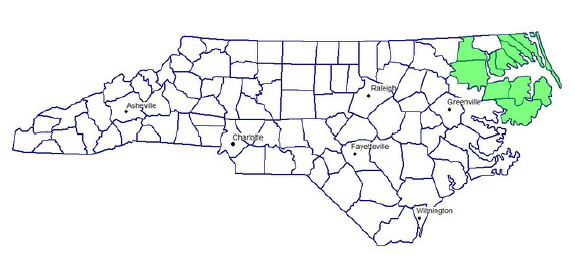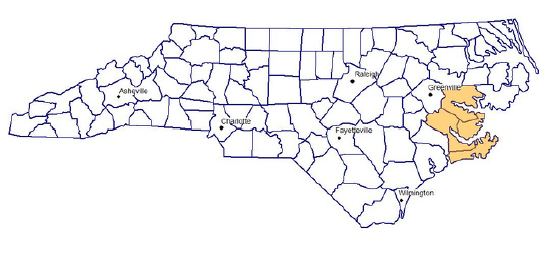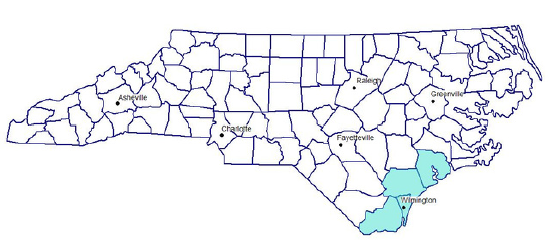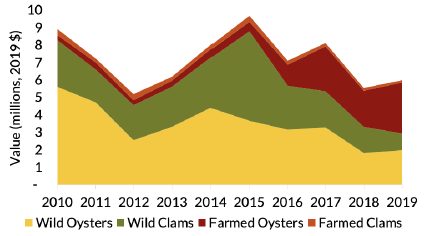The Economic Impact of North Carolina's Shellfish Mariculture Industry
OYSTER FARMING HAS EMERGED AS A KEY COASTAL INDUSTRY
North Carolina's shellfish industry provides over $27 million in economic impact and 532 jobs in the state. Until 2016, this sector's impact was primarily due to the harvest of wild clams and oysters. More recently, wild harvests have declined and cultivated oysters now represent over half of the total economic impact of shellfish in the state.
Our estimates suggest farmed oysters contribute over $14 million to state GDP and 271 jobs. Growing inland consumer demand for oysters, especially from restaurants, is increasing the economic impact of the industry across the state.
Farmed Shellfish Economic Impact
| Economic Impact | Employment | |
|---|---|---|
| Harvesting | $6.77M | 118 |
| Preparation and Processing | $0.84M | 12 |
| Fish Markets and Retailers | $0.57M | 11 |
| Seafood Restaurants | $5.89M | 130 |
| Total | $14.06M | 271 |
Value Added Income
All impact figures are value-added income for 2019. For the harvesting sector value-added is total sales. At the processing, restaurant, and retail levels, value-added is sales minus the cost of non-labor inputs. Value-added does not include non-North Carolina inputs, and avoids double counting product used several times in the production chain. Economists view value-added as the most accurate measure of economic impact.
Methodology and additional details for the estimates included in this factsheet are available by emailing eric.edwards@ncsu.edu.
Prepared by Dr. Eric Edwards, N.C. State Department of Agricultural and Resource Economics
Publication date: May 17, 2021
N.C. Cooperative Extension prohibits discrimination and harassment regardless of age, color, disability, family and marital status, gender identity, national origin, political beliefs, race, religion, sex (including pregnancy), sexual orientation and veteran status.




